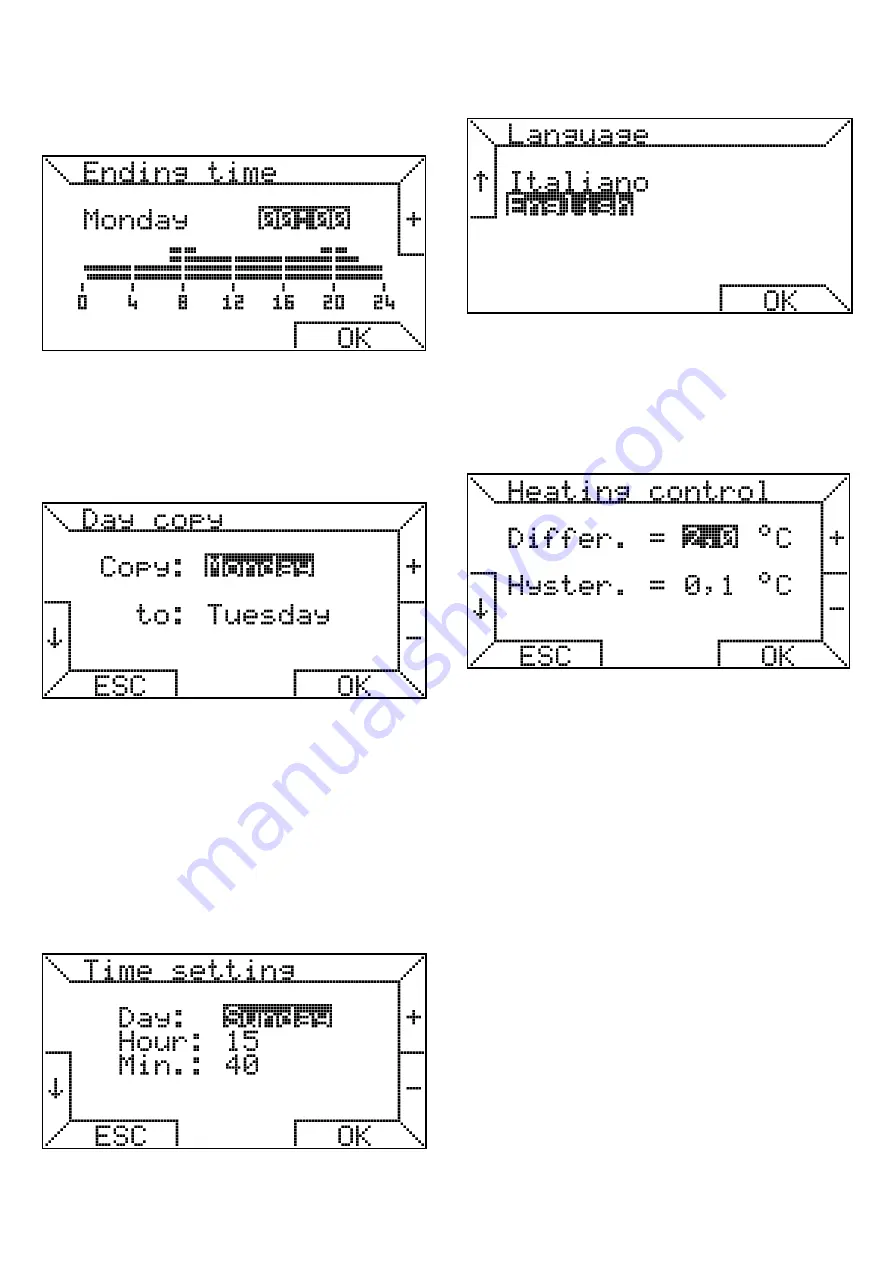
20
In the second step, pushing the ◄ and ► you select
which of the four programmed temperatures will be
associated to the time slot.
Pushing OK you confirm the level of temperature and
pushing ESC you return in the first step.
In the third step you select the ending time.
The final time can not be less than initial time, selecting
two coincident values for initial time and final time, the
daily schedule is not changed.
The last item on the “Programming” menu allows you to
copy the program day to another day.
At the top you select the source day in the lower you
select the destination day, You can also copy a program
of the day all week and have the same program every
day, to do this select as target the “ALL”.
When you press OK, a message confirms your copy of
the program.
Completed the description of the “Programming menu”,
we return to describe the sub menu “SETTING MENU”.
The “Time setting” submenu on the “SETTING MENU”
allows adjustment of the current time and day of the
week.
Pushing the ↓ and ↑ buttons you select the item you
want to change, while pushing the + and - buttons you
change the value.
Pushing the OK button, you confirm the changes.
The “Language” submenu on the “SETTING MENU”
allows set the language of texts on the chronothermostat.
As seen above, this setting is required when you first
start or after a reset of the chronothermostat, then it can
be changed at will.
The last item, “Heating Control” of the “SETTING MENU”,
concerns the method used by the chrothermostat for
controlling room temperature.
In this screen you can set the differential, which can
vary between 0.2 º C and 5.0 º C (default value: 2.0 ºC).
d
is the thermal differential,
Max
is the maximum rate,
Ti
and
Ta
are the room temperature set and the room
temperature measured.
The required percentage P is calculated as follows:
if
Ta ≤ Ti
- d then
P = Max
if
Ti – d < Ta < Ti
then
P = ( Max / d ) x ( Ti – Ta )
if
Ta ≥ Ti then P = 0
Example 1:
Ti = 20,0 ºC
Max = 100%
d = 0,5 ºC
If Ta ≤ 19,5 ºC then P = 100%;
If 19,5 ºC < Ta < 20,0 ºC then P = (100 / 0,5) x (20 – Ta) %;
if Ta ≥ 20 ºC then P = 0.
On the same page you can enter the hysteresis value
(asymmetric) in order to avoid frequent restart of
generators.
Hysteresis may vary in steps of 0.1 ºC between 0.1 ºC
and 50% of the set differential value.
After reaching the set temperature
Ti
, the chrothermostat
controls the switching off of the generators, the following
restart will take place only if the temperature falls
under the set temperature decreased hysteresis (Ti-
hysteresis).
The default hysteresis is 0.1 ºC
.






























